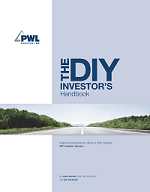ETF dividend dates explained
Occasionally when you buy an ETF you won’t be eligible to receive the fund’s next dividend payment. At other times you’ll sell an ETF only to be paid a dividend a few days later.
Advertisement
Occasionally when you buy an ETF you won’t be eligible to receive the fund’s next dividend payment. At other times you’ll sell an ETF only to be paid a dividend a few days later.
 This post is excerpted from The DIY Investor’s Handbook, coauthored by myself and Justin Bender, and available exclusively to clients of our DIY Investor Service.
Occasionally when you buy an ETF you won’t be eligible to receive the fund’s next dividend payment. At other times you’ll sell an ETF only to be paid a dividend a few days later. This is confusing for many investors, so let’s look at some important dates surrounding dividend payouts.
When a fund announces a dividend (or other distribution, such as an interest payment from a bond ETF), it will declare a record date and a payment date. For example, it might announce it will pay a distribution of $0.10/share to investors who own the ETF on January 15 (the record date), with the payment to be made on January 18 (payment date). In this case, if you sell your shares on January 16, you will still receive the dividend two days later, even though you no longer own the fund.
Two business days before the record date, the ETF will begin trading ex-dividend (“without dividend”). This means if you purchase the ETF on this date or later, you will not receive the upcoming dividend. For this reason the ETF’s net asset value—and therefore its price—will drop by the amount of the distribution on the ex-dividend date. However, if you sell the ETF on the ex-dividend date or later, you will still receive the distribution, because you will still be considered the shareholder of record until the trade settles three business days later.
Until the ex-dividend date, the ETF is said to be trading cum dividend (“with dividend”). The last cum dividend date is always three business days before the record date: the ETF purchase will therefore settle on the record date. However, if you sell the ETF on the cum dividend date, you will not receive the distribution, because you will no longer be considered the shareholder of record when the trade settles three business days later.
Using our example above, here’s how these dividend dates affect whether you’ll receive a distribution after buying or selling an ETF:
This post is excerpted from The DIY Investor’s Handbook, coauthored by myself and Justin Bender, and available exclusively to clients of our DIY Investor Service.
Occasionally when you buy an ETF you won’t be eligible to receive the fund’s next dividend payment. At other times you’ll sell an ETF only to be paid a dividend a few days later. This is confusing for many investors, so let’s look at some important dates surrounding dividend payouts.
When a fund announces a dividend (or other distribution, such as an interest payment from a bond ETF), it will declare a record date and a payment date. For example, it might announce it will pay a distribution of $0.10/share to investors who own the ETF on January 15 (the record date), with the payment to be made on January 18 (payment date). In this case, if you sell your shares on January 16, you will still receive the dividend two days later, even though you no longer own the fund.
Two business days before the record date, the ETF will begin trading ex-dividend (“without dividend”). This means if you purchase the ETF on this date or later, you will not receive the upcoming dividend. For this reason the ETF’s net asset value—and therefore its price—will drop by the amount of the distribution on the ex-dividend date. However, if you sell the ETF on the ex-dividend date or later, you will still receive the distribution, because you will still be considered the shareholder of record until the trade settles three business days later.
Until the ex-dividend date, the ETF is said to be trading cum dividend (“with dividend”). The last cum dividend date is always three business days before the record date: the ETF purchase will therefore settle on the record date. However, if you sell the ETF on the cum dividend date, you will not receive the distribution, because you will no longer be considered the shareholder of record when the trade settles three business days later.
Using our example above, here’s how these dividend dates affect whether you’ll receive a distribution after buying or selling an ETF:
 A couple of important points to consider:
A couple of important points to consider:
Share this article Share on Facebook Share on Twitter Share on Linkedin Share on Reddit Share on Email